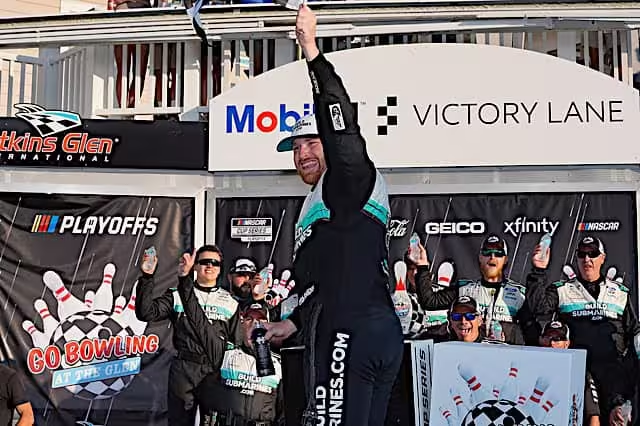Who… should you be talking about after the race?
After falling just short of the playoffs and winless in 2024, Chris Buescher went to Watkins Glen International with just one goal: to win the Go Bowling at the Glen.
Starting 24th, Buescher used pit strategy to put himself in a group of drivers who stayed out at the end of the second stage, gambling on tires to last a long fuel run. After the final round of green flag stops, that group had to pit before drivers who had pitted in stage two, but Buescher was able to move through the slower drivers on old tires in front of him and hold his track position.
Once at the front of the field, Buescher showed his hand, holding the lead through a series of late cautions and overtime restarts. He was passed on the white-flag lap by Shane van Gisbergen after a daring move on the final overtime restart, but charged back by when van Gisbergen got into the Bus Stop too hot and overshot the exit by a fraction. On the final lap, Buescher opened his lead back to just under a second before taking the checkers for the sixth time in his career.
And don’t forget Spire Motorsports. Rookie Carson Hocevar finished third after mistakenly entering the unused “boot” portion of the track during the Xfinity race on Saturday, the best Cup finish to date for the 21-year-old.
But that wasn’t all for the organization. Zane Smith finished fifth and Corey LaJoie eighth, putting all three Spire cars in the top 10 on Sunday, the only organization to put all of its cars in the top eight.
What… is the big question leaving this race in the rearview?
Following a lap 1 dustup, Ryan Blaney was left in a bind. His car didn’t look heavily damaged, but the steering on the No. 12 wasn’t working after the incident and it had to be towed back to the garage. Because of that, the crew wasn’t allowed to make repairs under the Damaged Vehicle Policy.
The DVP was contrived in order to keep teams from making hasty repairs and sending cars back onto the racetrack only to shed parts or crash again. Under the policy, teams have limited time and crewmen to attempt repairs; they must meet the scrutiny of a watchful official, get back onto the track and reach minimum speed before the clock runs out. If they do, the clock resets and they’re free to race. If they can’t make minimum speed and/or run out the clock, they must pack up and go…
Click Here to Read the Full Original Article at …

